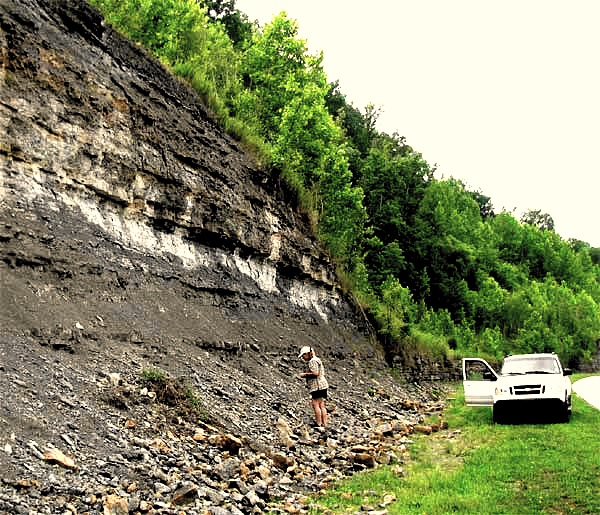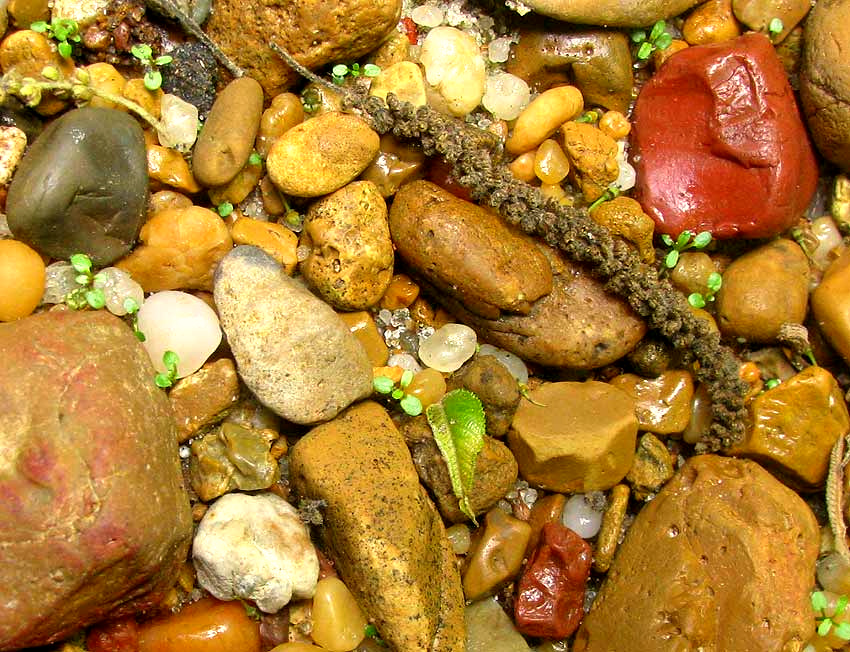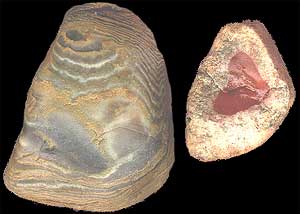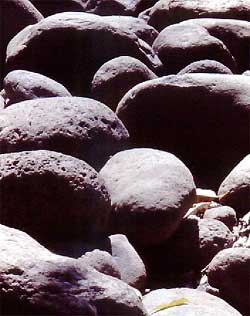
Rocks are made of minerals; minerals are made of chemical elements, and; the elements were made in outer space, mostly in stars.
Rocks are masses of solid mineral matter occurring naturally. They're made of one or more minerals, and may include fossils.
WHY BOTHER WITH ROCKS?

Normally you don't bother with a rock unless there's something special about it. Maybe it has a funny shape, pretty color or curious markings, or maybe fossils are visible.
A rock's special features, then, are what we're interested in. Having fun with rocks works like this: You wonder why a rock is the way it is, and when you start learning to interpret them, that's when the fun starts.

For example, at the right, pictures in a rock-identification field guide suggest that both rocks are chert, so they're almost entirely made of the mineral silica, Si02. However, obviously they have very different histories, and you'll learn that chert forms in various ways. Once you figure out how a rock got to be the way it is, it's like seeing back before people were alive, when dinosaurs roamed the Earth, and even much, much earlier.

FROM CLAY TO BOULDER
(using the Wentworth Size Scale)
clay: less than 1/256 mm
silt... 1/256 to 1/16 mm
sand....... 1/16 to 2 mm
granule....... 2 to 4 mm
pebble....... 4 to 64 mm
cobble..... 64 to 256 mm
boulder......... >256 mm
So, there's a lot to know about rocks, and one way to start organizing your thoughts about them is to remember from your Sixth Grade lessons that there are three kinds of rock, based on how they were formed. To learn more about each of those three rock types, just click on their names below:
- Igneous Rocks: examples: granite, basalt, diabase, diorite, gabbro, obsidian, pumice, rhyolite, scoria
- Sedimentary Rocks: examples: limestone, sandstone, shale, breccia, conglomerate
- Metamorphic Rocks: examples: marble, gneiss, quartzite, schist, hornfels, slate